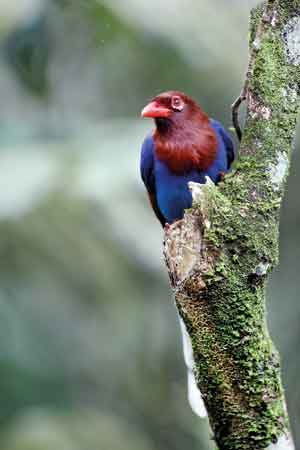A portable mine of info for bird lovers
View(s):Finally, a much-needed requirement has been fulfilled. Gehan de Silva Wijeyeratne has had the courage, patience and endurance to meet this need. I personally was longing for a complete photographic guide to our birds and was delighted when the author told me he had started on this project.

Gehan de Silva Wijeyeratne
A work of this nature involves many man hours both in the field and reference to published literature. Balancing a day job, his duties as Chairman of the London Bird Club and working on this book as well, would have been difficult but the author’s persistence has paid off. The result is a portable mine of information.
Although there are many books on the birds of Sri Lanka- both in the field guide and text book category, this is the first photographic guide to all the birds of Sri Lanka recorded up to the time of publishing.
In my personal opinion, photographs are better for use in identifying birds as artists have their individual styles of painting. Some are true to their subject while others have an “arty” style. Some artists paint their subjects without having seen the bird and rely on other artists’ work or images.
However, a photograph captures the entire bird with one click of the camera. The only downside to a photograph is the lighting conditions in which it is taken. Lighting can affect the colour of a bird and even its size but the jizz of a bird (jizz originated from the US Air Force term General Impression and Shape [GIS] and is now commonly used in birding parlance), can be captured accurately in a photograph.
This photographic guide is meant for field use so the text against each bird is confined to a minimum and describes the key identification points to enable identification in the field.
However, the book also contains a wealth of information and I found the particulars contained in the Introduction, the chapters on Climatic Zones & Monsoons, Habitats & Top Sites and Additional Birdwatching Sites particularly informative. Where to go and what birds could be expected to be encountered, directions on how to get there and accommodation available, are all there.
A 14 day Itinerary for visiting birders is also included. Birders can either follow the Itinerary or pick what appeals to them if time is limited. Local birders who would like some idea of time frames for a few sites to visit and what these locations could deliver, could choose their locations from this Itinerary.
An interesting feature is a summary of facts on Sri Lankan Birds- e.g. the smallest bird, the largest bird, the mystery bird, the bird most easily heard and least seen etc. This information is presented in text box format.

The Ceylon Blue Magpie
Still more valuable information is provided in the form of the status of the birds and the chapters on Vagrants or Highly Scarce Migrants, with a listing of the birds in these two categories is of particular interest.
Further gems of information are provided in text box form- for example, Seabird Migration Watching will tell you which time of the year you should embark on a pelagic tour and what you could expect to encounter.
Moult and Aging in Gulls provides invaluable and detailed information on this difficult subject.
How to identify similar species is given in the “Telling Apart…” boxed series: for example, Telling Apart the Pratincoles, Purple and Loten’s Sunbirds, the Drongos and the Jerdons, Indian Little & Indian Jungle Nightjars is very useful especially for those new to Sri Lankan birds.
The text box titled Identifying the Frigatebirds also helps the birder to identify the three species of frigatebirds recorded in the country.
A short description of the Order followed by that of the Family is also featured at the beginning of each Family featured in the book. Interesting snippets such as “only one family worldwide” as in the case of the grebes, is useful to know.
Air-space Niche Partitioning in Bee-Eaters contains a set of interesting facts and explains how birds coexist with mutual understanding and in harmony with each other.
Sri Lanka’s birds as a percentage of the World’s Orders, Families, Genera and Species is another useful source of information as is the categorisation of Residents, Migrants and a combination of Resident and Migrant Birds.
The 34 endemics and their families are also listed at the beginning of the book with a small image, for anyone who needs a quick reference to this information without having to constantly keep turning pages.
The distribution maps are clear and overall, the images of the birds are clear with some shown in breeding and non breeding plumage where these differ and others where is there is sexual dimorphism. However I found the image of the Hume’s Whitethroat not conforming to the description in the text.
The nomenclature used is mainly that used in The Birds of South Asia – The Ripley Guide by Rasmussen and Anderton so there is uniformity.
It is a pity that more of the common birds have not been sourced from local photographers despite the author calling for them and he ended up having to outsource them from overseas.
This book is good value for money and indeed a “must have” for anyone interested in the birds of Sri Lanka.
It is available at Vijitha Yapa Bookshops at a price of Rs. 2,700- as well as at all other major bookshops.
| Book facts | |
| A Photographic Field Guide To The Birds Of Sri Lanka by Gehan de Silva Wijeyeratne. Reviewed by Tara Wikramanayake |


